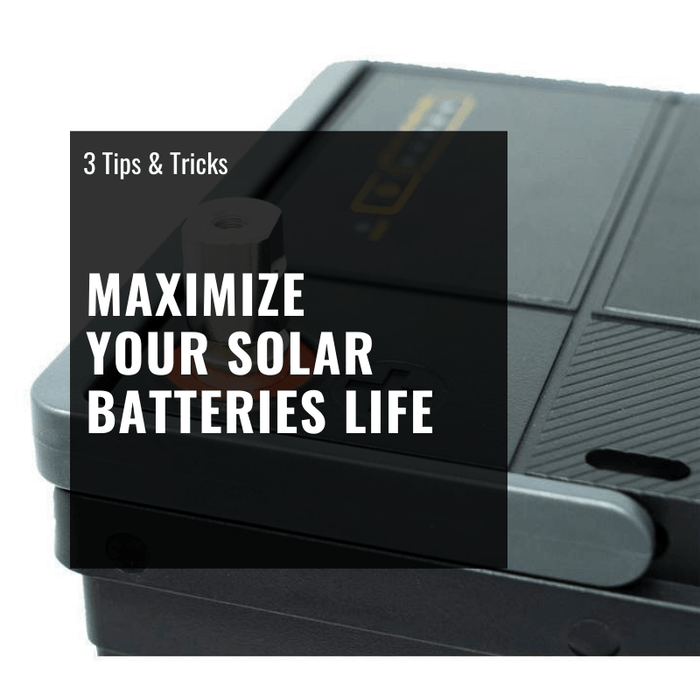
LiFePO4 Voltage Chart
Short on Time? Here’s The Article Summary
The article discusses lithium-ion batteries, particularly LiFePO4 batteries, commonly used in solar systems. It highlights their advantages, such as being secure, dependable, and low-maintenance, with long charge cycles. The voltage charts for 12V, 24V, and 48V LiFePO4 batteries are presented, showing the relationship between voltage and state of charge.
The article explains the importance of understanding a battery's state of charge, voltage, and discharge depth. It also touches on the impact of temperature on battery performance and the cycle life of lithium batteries, which can reach up to 6,000 cycles. Overall, the article provides valuable information for understanding and comparing LiFePO4 batteries in solar systems.
Introduction
Lithium-Ion batteries are the most common batteries used in solar systems.
Understanding why and the relationship between the current, voltage, and state of charge allows you to understand how they operate.
But how does a LifePO4 battery’s voltage chart compare to a lead acid battery?
Let’s find out and dive into the topic of today’s article.
Table of Contents
LiFePO4 Batteries
Lithium-Ion batteries are the most secure and dependable solar batteries to integrate into your solar system.
Where quality is high, the cost is also high.
A lithium-ion battery requires almost no maintenance and can be used without being fully charged.
They were made to have extremely long charge cycles, so after you buy one battery, it will be a while before you need another.
The safety features of this battery also aid in managing and keeping an eye on the battery's condition.
For instance, if a battery overheats, it will automatically shut down to conserve energy and allow the battery to cool down.
It is ideal for the large kilowatt solar systems used by farmers and solar professionals since they may be daisy-chained together.
These batteries are different to lead acid batteries in terms of design and the overall production process.
This means the voltage curve or chart of a lithium-ion battery will look different from a lead-acid battery charge curve.
State of Charge
A battery’s state of charge is defined as the capacity remaining that you can discharge over the total capacity of the battery pack.
Let’s give a more practical example of how this works before diving headfirst into the charts.
If we have a battery pack rated at 100Ah and we still have around 70ah left to discharge, our state of charge will be around 70%.
In other words, if you fully charge the battery pack to 100Ah and then discharge around 30Ah, you’ll have 70Ah of the capacity remaining.
When we refer to a battery having an absolute state of charge, the battery is completely new and fresh out of the packaging.
This is the only case when the battery’s state of charge is at 100%, as the more you use a battery, the more its state of charge decreases.
Voltage
Understanding a battery’s voltage makes reading battery volt charts a walk in the park.
The performance and voltage of the batteries are not the same due to variations in the raw materials used by each manufacturer.
The LFP battery cell's nominal voltage is 3.2V, its high end is 3.6V, and its low end is 2.0V under normal circumstances.
With a 12.8V battery, the LFP battery cell's suggested charging voltage is 3.65V.
After years of actual use, 3.65V per cell is a reasonable charging voltage.
In various circumstances, the LFP battery's relevant voltage varies. primarily in three situations.
These are the battery’s charging condition, the discharging condition, and the open-circuit voltage.
The charging and discharging voltage are more relevant in applications as they include a set of end voltages. This ensures that the battery is in a working and stable condition.
The Effects of Temperature
Battery life is significantly impacted by temperature, and we use a high temperature to conduct an expedited test of battery life.
Many online charts, like the solar panel voltage chart, take a battery’s temperature as a variable to work with.
High temperatures will result in an irreversible loss of battery capacity, with the main effect being accelerating battery degradation at the Solid Electrolyte Interface.
Charge transfer resistance, which takes place at the electrode interface during battery charging and discharging, is the force of the charge transfer process.
Potential voltage is required when electrochemical reaction resistance increases.
The key elements that may have an impact on the performance of a power battery at low temperatures are the Solid Electrode Interface film resistance and interfacial charge transfer resistance.
When the temperature is lower, the battery's input power, output power, and charge and discharge rate will all drop quickly.
For lithium-iron phosphate batteries, the main attenuation at low temperatures is power rather than capacity.
Charge Cycle of LiFePO4 batteries
Lithium batteries are renowned for having a long cycle life, as many as 6,000 cycles.
Generally, 80% of the capacity is still available after those 6,000 cycles.
To put that in context, the battery would have been cycled every day for 16 years for it to be completely dead.
You only reach those 6,000 cycles if you don't discharge below 10% and charge above 90%.
To reach 6,000 cycles, a battery with a useful capacity of 100Ah must have 80Ah. You can obtain 4,000 cycles if you use the battery's entire capacity, which is still a large amount.
LiFePO4 Battery Voltage Chart
Let’s have a look at a few LiFePO4 battery voltage charts and see how they compare to one another.
12V Lithium Battery Voltage Chart
Let’s look at the lithium-ion battery voltage chart using a LiFePO4 battery 12v and see how it compares to lead-acid batteries.
|
Voltage |
Capacity |
|
14.6V |
100% (charging) |
|
13.6V |
100% (resting) |
|
13.4V |
99% |
|
13.3V |
90% |
|
13.2V |
70% |
|
13.1V |
40% |
|
13.0V |
30% |
|
12.9V |
20% |
|
12.8V |
17% |
|
12.5V |
14% |
|
12.0V |
9% |
|
10.0V |
0% |
24V Lithium Battery State of Charge Chart
As you can see from this 24V lithium battery state of charge chart, the relative relationship between voltage and battery capacity is the same as for a 12V battery.
|
Voltage |
Capacity |
|
28.8V |
100% (charging) |
|
27.2V |
100% (resting) |
|
26.8V |
99% |
|
26.6V |
90% |
|
26.4V |
70% |
|
26.2V |
40% |
|
26.0V |
30% |
|
25.8V |
20% |
|
25.6V |
17% |
|
25.0V |
14% |
|
24.0V |
9% |
|
20.0V |
0% |
48V Lithium Battery State of Charge Chart
Bigger batteries are required for bigger systems. Chances are that you will use a 48V lithium-ion battery if your solar system is powering the entirety of your house.
Let's look at a 48V battery voltage chart and see how it compares to the others.
|
Voltage |
Capacity |
|
57.6V |
100% (charging) |
|
54.4V |
100% (resting) |
|
53.6V |
99% |
|
53.2V |
90% |
|
52.8V |
70% |
|
52.4V |
40% |
|
52.0V |
30% |
|
51.6V |
20% |
|
51.2V |
17% |
|
50.0V |
14% |
|
48.0V |
9% |
|
40.9V |
0% |
The voltage of a 48V lithium battery varies significantly, from 57.6V at 100% charge to 40.9V charge, as you can see.
Similar to 12V and 24V lithium batteries, the 48V voltage is measured at 9% charge.
LiFePO4 Battery Discharge Chart
Discharge is typically shown using charts and curves.
To understand discharge, we need to look at the depth of discharge. This determines the fraction of power that can be withdrawn from a battery.
If we have a LiFePO4 battery that has a 25% depth of discharge, this means that only 25% of the battery’s capacity can be used by the load.
In other words, your 500Ah battery with a depth of discharge of 25% can only produce 125Ah. These values are much smaller than what you could expect to find on something like a AA battery voltage charge chart.
Every time a load is connected to the battery, it drains since the load draws current from the battery.
You can think of battery discharge as the process by which a battery completely loses its charge.
As the load takes greater current, the battery drains more quickly.
We can use two alternative discharge periods with the batteries because different batteries are used for various purposes.
|
Battery or Battery Pack Ah Rating |
7 Minute Maximum Discharge Current |
30 Minute Maximum Discharge Current |
|
5Ah |
15 Amps |
10 Amps |
|
7Ah |
21 Amps |
14 Amps |
|
8Ah |
24 Amps |
16 Amps |
|
9Ah |
27 Amps |
18 Amps |
|
10Ah |
31 Amps |
21 Amps |
|
12Ah |
36 Amps |
24 Amps |
|
14Ah |
42 Amps |
31 Amps |
|
15Ah |
44 Amps |
32 Amps |
|
18Ah |
57 Amps |
40 Amps |
|
22Ah |
66 Amps |
46 Amps |
|
35Ah |
105 Amps |
84 Amps |
The Ultimate Solar + Storage Blueprint (Mini Course)
Struggling to understand how solar + storage systems actually work? Looking to build or buy your own solar power system one day but not sure what you need? Just looking to learn more about solar, batteries and electricity?
Join 15,000+ solar enthusiasts breaking free from their energy dependence with this short step-by-step video course that will make you a solar + storage expert. Start your journey to energy independence today.
Who is ShopSolar.com?
ShopSolar.com is the #1 digital platform that enables consumers & businesses to source and purchase complete solar + storage solutions direct, saving you thousands in time, energy and money! With over 40,000+ happy customers, we’re on a mission to make solar simple, transparent and affordable.
Did You Find Our Blog Helpful? Then Consider Checking:
- AGM Battery Voltage Chart
- Deep Cycle Battery Voltage Chart
- RV Battery Voltage Chart
- Battle Born Battery Voltage Chart
- Marine Battery Voltage Chart
- 52v Battery Voltage Chart
- 6 Volt Battery Voltage Chart
- 48v Battery Voltage Chart
- 24v Battery Voltage Chart
- Solar Voltage Drop Calculator
- Watts to Volts Calculator
- Convert Volts to Watts
- Amps to Volts Calculator
- Amps, Watts, & Volts Calculator
- Convert Volts to Amps









Leave a comment